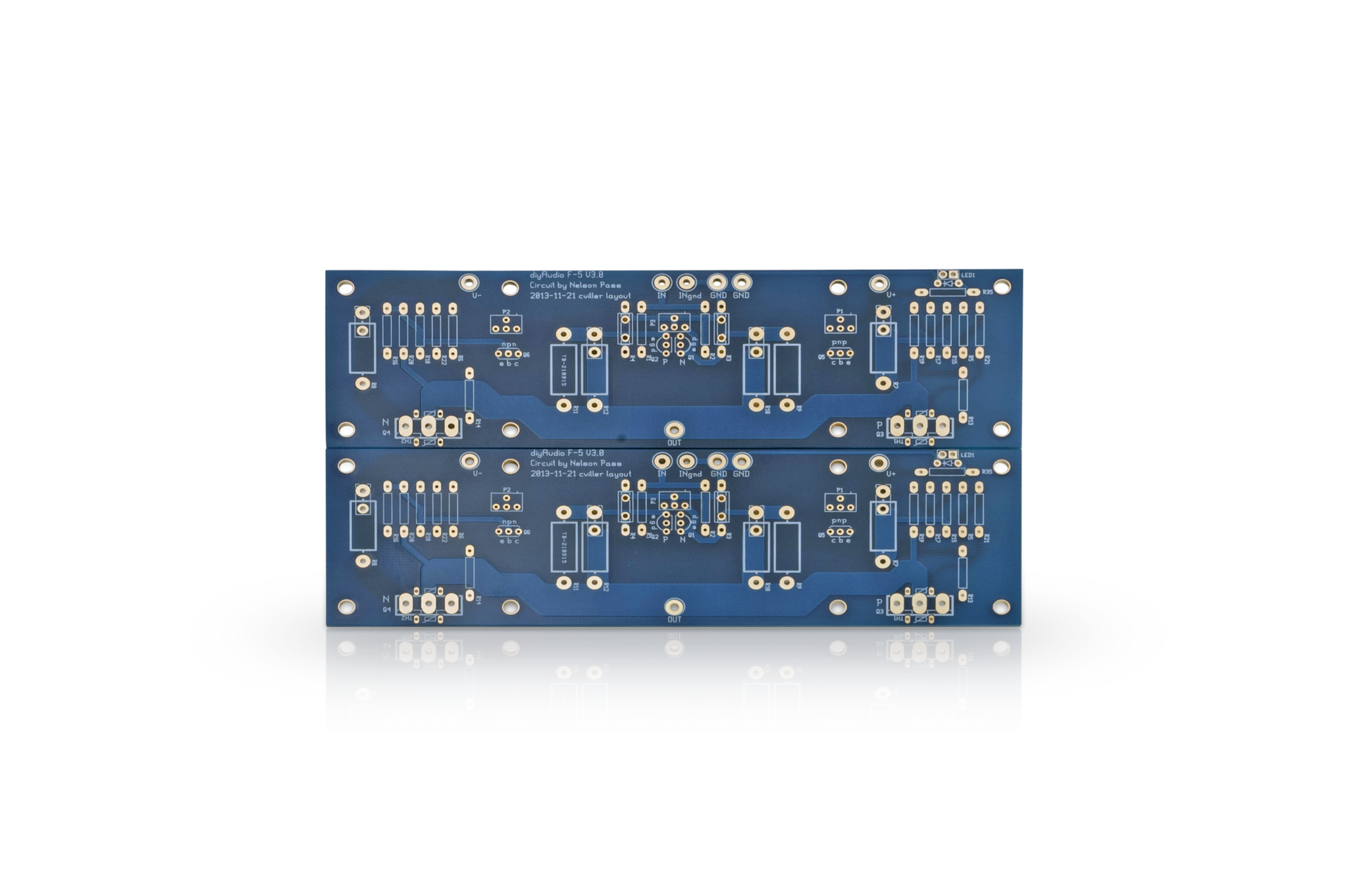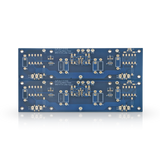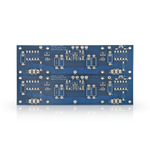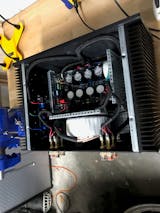

F5 PCB
- Description
- Project Info
- Links
This pair of F-5 Clone circuit boards use the same circuit as the Nelson Pass / Firstwatt F-5 model. This is V3.0 of the boards, and it should be assembled using the F5v3 Build Guide.
| Dimensions | 170mm x 50mm |
|---|---|
| Mounting holes | UMS Heatsink Compatible |
| Number of boards included | 2 |
| Layers | 2 |
| Board Revision | 3.0 |
F5 Project
- Power Amplifier
- Designed by Nelson Pass
- Intermediate Difficulty
- Comprehensive Build Guide
- Only Essentials Kit Available
Contributors
- Jim Tiemann (Build Guide)
- diyAudio F5v3 Build Guide
- V3 Schematic (Included in the F-5 Turbo Article) (PDF)
- V3 Schematic itself extracted from the F-5 Turbo Article (JPG)
- diyAudio Store F-5 Helpdesk Thread
Visit the F5 project page for more information about this project.
F5 PCB
Note - Photos include parts available at the time of publishing. Individual components are subject to change based on availability.
I replaced an ancient NAD 2150 with this and am very happy with the result. My system consists of a DIYINHK DAC driving the amp, and a pair of Linn Keilidh speakers.
The circuit boards are high quality and the assembly is straight forward. I went with the deluxe chassis, universal power supply, and the soft start/speaker protection boards. The build guide and help thread were very helpful.
I can find no flaws with the sound quality. It is very clean and clear. Voices in particular stand out. Bass has plenty of punch. Complex musical passages with lots going on remain clear. It has plenty of power to drive my speakers to above reasonable listening levels.
My compliments to Nelson Pass for the circuit design, and to the DIY Audio Store crew for making it possible.
Very good board.
I modified the F5 board to F7.
1-Cut 3 places (orange line).
2-Add 2 resistors back face.
3-Cross drain pin & sorce pin of power mos-fets.
So last night I finished my F5 amplifier.
It uses these boards and is a text book build; everything went to plan, and it sounds great.
A 300 watt Toroidy Audio Grade transformer is being used, which seems fine.
Two tips:
1 - when soldering R7 & R8 think about how you will attach your multi meter during the bias setting stage. I have them standing off the board a little, and my test hooks clipped on easily and safely.
2 - when setting P1 and P2 to zero, triple check that the resulting resistance across R5 & R6 is low not high. This could require clockwise OR anti clockwise adjustment depending on how you position P1 & P2 on the board. When setting bias for the first time, expect no change for a few turns, then a rather sudden increase in voltage.
Top quality boards. Top service and fast shipping. Build zhe F5 and Im truly happy with the sound. Thanks Diyaudio store!
Absolutely love these boards! Very nice quality board, and the layout is superb. DIY Audio never disappoints!
- Related products
- Recently viewed








